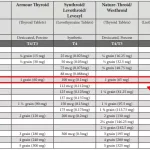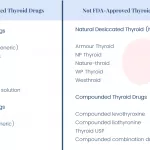Most people think “bulimia” and “binge eating” are the same because both involve eating a lot in one sitting. The truth is that the two disorders split on one crucial habit – purging. If someone is regularly making themselves vomit, using laxatives, or over‑exercising after a binge, you’re looking at bulimia.
Below you’ll see a side‑by‑side look at symptoms, health risks, and treatment options so you can tell them apart fast and know what steps to take next. Grab a cup of tea, settle in, and let’s untangle these often‑confused conditions together.
Quick Look Summary
In a nutshell:
- Bulimia = binge + regular compensatory behaviors (vomiting, laxatives, extreme exercise).
- Binge‑Eating Disorder (BED) = binge + no systematic purging.
- Both affect roughly 2‑3 % of U.S. women, according to the National Association of Anorexia Nervosa and Associated Disorders (ANAD).
Core Definitions
What Is Bulimia?
Bulimia nervosa is a diagnosed eating disorder that meets the DSM‑5 criteria of:
- Recurrent binge‑eating episodes (eating an amount of food that is definitely larger than what most people would eat in a similar period).
- Compensatory purging or other “compensatory behaviors” at least once a week for three months.
- Self‑evaluation overly influenced by body shape and weight.
Purging can mean self‑induced vomiting, laxative or diuretic misuse, or excessive exercise. The “non‑purging” type of bulimia still involves compensatory actions like fasting or intense cardio, but the hallmark is the drive to offset calories.
What Is Binge‑Eating Disorder?
BED also meets DSM‑5 standards, but the key difference is the absence of regular purging. The diagnostic points are:
- Binge episodes occurring at least once a week for three months.
- Feeling a loss of control during the binge.
- Marked distress about binge‑eating, without regular compensatory behaviors.
People with BED may be overweight, but weight isn’t a required criterion. The emotional fallout—shame, guilt, anxiety—is just as intense as with bulimia.
Symptom Checklists
Bulimia Symptoms – Quick Scan
- Frequent vomiting or laxative use after meals.
- Secretive binge episodes (eating quickly, feeling out of control).
- Physical signs: dental erosion, swollen salivary glands, calloused knuckles (“Russell’s sign”).
- Mood swings, intense guilt, or anxiety following binge‑purge cycles.
Typical Bulimia Day (Table)
| Time | Behavior | Why It Happens? |
|---|---|---|
| 6 PM | Large pizza binge | Stress after work, feeling “earned” the treat |
| 7 PM | Self‑induced vomiting | Fear of weight gain, trying to “reset” calories |
| 9 PM | Excessive cardio (30 min run) | “Clean‑up” effort, belief that exercise will erase calories |
Binge‑Eating Symptoms – Quick Scan
- Eating large amounts of food when not hungry.
- Eating rapidly, often alone, and feeling unable to stop.
- Feeling shame, guilt, or depression after a binge.
- No regular use of laxatives, vomiting, or extreme exercise to compensate.
Real‑World Example
“I’d finish an entire cake in ten minutes, then hide in my bedroom for hours feeling worthless. The next day I’d promise myself never to do it again, but the stress would bring me back.” – Anonymous client, 28 y/o.
Why They Look Similar
Shared Features
Both disorders share:
- Recurrent binge‑eating episodes that feel outside the person’s control.
- Distorted body image and a strong desire to lose weight.
- High rates of co‑occurring mood disorders (depression, anxiety). According to ANAD, over half of bulimia patients also meet criteria for an anxiety disorder.
The One Thing That Sets Them Apart
The decisive factor is purging. If the person regularly engages in compensatory behaviors after bingeing, it’s bulimia. If they don’t, it’s BED.
Underlying Causes & Risk Factors
Genetic & Biological Influences
Research shows a familial component—siblings of someone with an eating disorder are up to three times more likely to develop one themselves. Neurotransmitter imbalances (serotonin, dopamine) also play a role, influencing impulse control and mood regulation.
Psychological Triggers
Perfectionism, impulsivity, and past trauma often surface as internal drivers. A study published in Eating Disorders Review (2023) found that individuals with high perfectionist scores were 42 % more likely to develop bulimic behaviors.
Sociocultural Pressures
Media glorification of thinness, diet culture, and the “quick‑fix” weight‑loss trend can push vulnerable people toward disordered eating. The “fitspiration” craze, while well‑intentioned, sometimes masks unhealthy extremes of exercise and restriction.
Health Consequences (Benefit‑Risk Balance)
Physical Risks of Bulimia
- Electrolyte imbalances leading to cardiac arrhythmias.
- Esophageal tears, chronic sore throat, dental enamel erosion.
- Kidney damage from chronic laxative abuse.
Physical Risks of BED
- Obesity‑related conditions: type 2 diabetes, hypertension, non‑alcoholic fatty liver disease.
- Metabolic syndrome and increased cardiovascular risk.
- Chronic fatigue and sleep disturbances.
Psychological Impact (Both)
Low self‑esteem, social isolation, and an elevated risk of suicidal thoughts are common across eating disorders. Early intervention dramatically reduces these outcomes.
Diagnosis – When to Seek Help
How Professionals Diagnose
Qualified clinicians use a structured interview, the DSM‑5 checklist, and sometimes medical labs (electrolytes, thyroid function) to confirm the diagnosis. A mental‑health professional—psychologist, psychiatrist, or licensed clinical social worker—will also assess for co‑occurring conditions.
Red‑Flag Warning Signs
- Regular vomiting, laxative dependence, or extreme exercise after meals.
- Sudden, unexplained weight changes (up or down).
- Persistent feelings of shame, guilt, or hopelessness around food.
- Thoughts of self‑harm or suicide.
Finding a Qualified Provider
Look for a therapist with experience in eating disorders, a registered dietitian who specializes in therapeutic nutrition, and, if needed, a psychiatrist for medication management. The National Eating Disorders Association (NEDA) maintains a searchable treatment‑finder directory (according to NEDA).
Treatment Options (Compensatory Behaviors Included)
Therapy Approaches
CBT‑E (Cognitive‑Behavioral Therapy for Eating Disorders) is the gold‑standard for both bulimia and BED. It helps break the binge‑purge cycle by challenging distorted thoughts and building healthier coping skills.
DBT (Dialectical Behavior Therapy) is especially helpful when emotional instability fuels binge episodes. It teaches mindfulness, distress tolerance, and emotion regulation.
Medical & Nutritional Management
Bulimia patients often need regular labs to monitor potassium, chloride, and other electrolytes. BED patients benefit from structured meal plans that normalize hunger cues and prevent extreme overeating.
Medication
- Fluoxetine (Prozac) is FDA‑approved for bulimia and shown to reduce binge‑purge frequency.
- Off‑label use of SSRIs (e.g., sertraline) can help BED patients with depressive symptoms and binge frequency.
Support Groups & After‑care
Peer‑led groups (both in‑person and online) provide a judgment‑free space to share experiences. 12‑step programs like Overeaters Anonymous are also widely used.
Real‑World Stories (Experience)
Case A – “Sam” (Bulimia)
Sam, a 24‑year‑old graphic designer, started binging after a stressful project deadline. Within weeks, he began vomiting nightly. He felt trapped—”I was terrified of gaining weight, yet I couldn’t stop eating.” After six months of CBT‑E and medication, Sam reduced binge‑purge episodes from daily to once a month, and he now practices mindful eating with a dietitian.
Case B – “Lena” (BED)
Lena, a 38‑year‑old mother of two, used food as comfort after her divorce. She ate large portions of pizza and ice cream in secret, feeling ashamed afterward. With DBT and a supportive weight‑neutral nutrition plan, Lena learned to identify emotional triggers and now reports binge episodes only a few times a year.
Bottom Line – Quick Takeaway
Bulimia and binge‑eating disorder share the binge core, but only bulimia involves regular compensatory behaviors like vomiting, laxative use, or extreme exercise. Both carry serious physical and emotional risks, and early, multidisciplinary treatment is essential. If you recognize any of the symptoms listed above—whether it’s a secret binge, frequent vomiting, or a lingering sense of shame—reach out to a qualified professional today. You deserve help, compassion, and a healthier relationship with food.
Ready to take the next step? Download our free “Eating‑Disorder Symptom Checklist” below, or join our newsletter for ongoing tips, personal stories, and expert advice. Remember, you’re not alone, and help is just a conversation away.


















Leave a Reply
You must be logged in to post a comment.